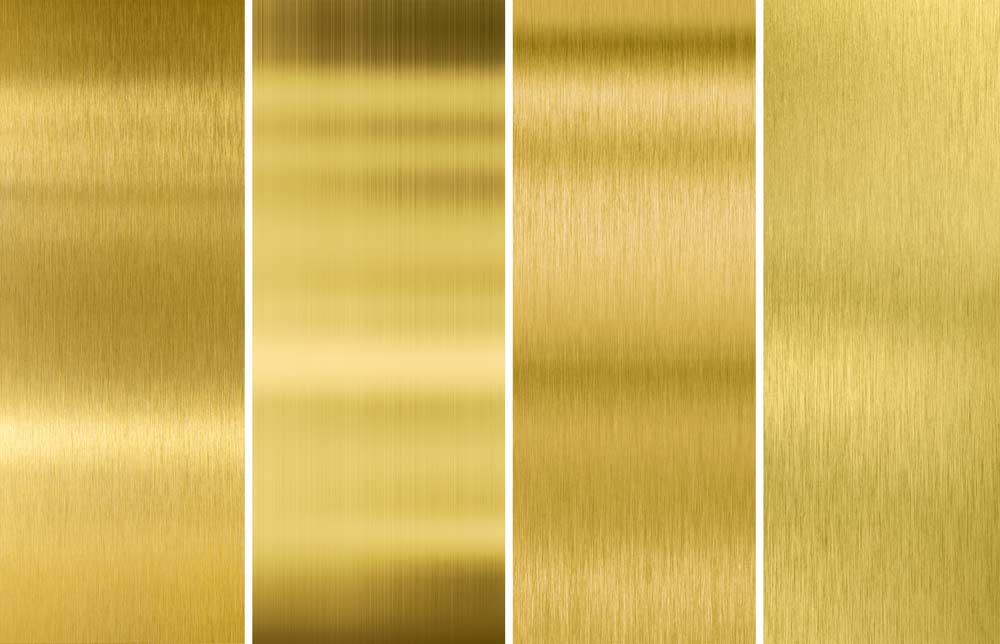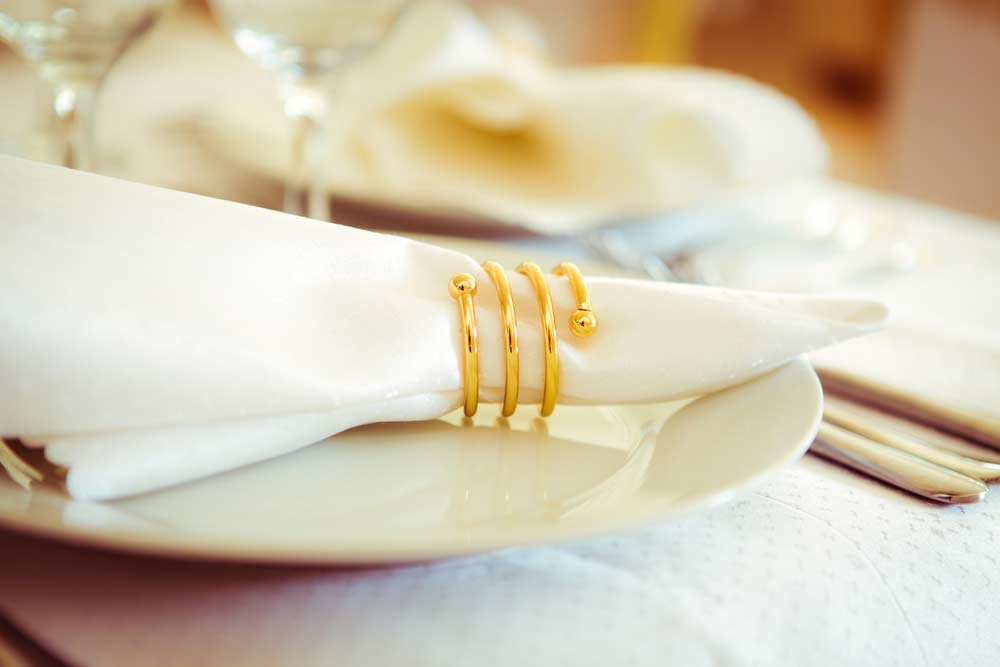Elegant, beautiful and a symbol of celebrations, gold is a noble metal that undergoes little oxidation and, for this reason, it was chosen over time as the main material for making jewelry and ornaments.
Gold can be found in rocks, rivers and streams, places that became known as the famous gold mines, where mines are built to mine this ore.
The word gold comes from the Latin Aurum, which means brilliant. Studies show that the first contacts of humans with this metal happened many years ago, even in the prehistoric time of the world.
There are documents, too, that show the existence of gold in hieroglyphics written in Egypt around the year 2,600 BC.
It is believed that more if 163 thousand tons of gold have been explored to date. All this exploration is used for several purposes, among them, the production of jewelry. And who doesn't like to admire different pieces of bracelets, necklaces, rings and earrings made of gold, right?
Gold jewelry is beautiful and long lasting, enchanting everyone who looks and draws a lot of attention. They can be used by men, women, children and even babies. Another positive point of gold is that it does not rust and is hypoallergenic. This makes it even more desired and, often, chosen for health reasons as well.
The purity of the metal ensures perfect finishes, but gold pieces can still look dirty over time. There are different types of gold and care for each one must be different.
Types of gold

Yellow Gold: gold pieces are not only made of gold, even in the case of yellow gold, the most common among the pieces. Yellow gold jewelry is also composed of copper and silver.
White gold: a mixture of gold, nickel, silver and palladium (a metal that has a white color) generated one of the most beautiful types of gold and they are very similar to silver, but with all the quality that gold offers. Some white gold pieces also have rhodium plating, a metal that enhances the grayish tone and gives shine to the jewels. Due to all this process, white gold pieces tend to be much more expensive than yellow gold pieces.
18k gold: 18 karat gold is the gold produced with 75% pure gold and 25% other metals and is the purest form for jewelry. 18k gold is very resistant, shiny and the most commonly found on the market. There is also 24k gold, but as it is not very malleable, it is not a good option for accessories.
Rose Gold: rosé gold has gained a lot of notoriety in recent years. It is composed of gold, silver and copper and has this all different tone that makes each piece unique. It is precisely copper that guarantees this color, but the amount of gold used in the pieces is not different from yellow gold, so its quality is very similar.
How to clean gold: tips and techniques

There are different techniques that can make your gold jewelry look like new. Check out:
Gold cleaning with neutral detergent
Although simple, cleaning gold pieces with neutral detergent works very well, especially for white gold and rose gold jewelry. For this, in a small container put warm water and neutral detergent. Let it dilute and place the piece for 10 minutes. With a toothbrush with soft bristles, lightly scrub the part. Dry and remove the excess with a dry, soft cloth.
Gold cleaning with baking soda
Ideal for cleaning white gold pieces, the tip here is to leave the jewel submerged in a solution of water with neutral detergent for 15 minutes, while you prepare a paste with baking soda. There are two tablespoons of warm water for one of baking soda. Mix and apply the paste with a soft bristle toothbrush, gently rubbing the piece.
Gold cleaning with ammonia
Ammonia also works very well for cleaning gold, but it requires great care as it is a very dangerous chemical. Always wear gloves when handling ammonia. The recipe is to use six spoons of water for one of ammonia and leave the piece submerged for about 3 minutes in the liquid. Remove and wash under running water.
Gold cleaning with coconut detergent
This is a perfect option for cleaning gold pieces that turn black. This usually happens due to the contact of gold with the skin and with sweat. Exposure to the sun and dust particles can also make gold gain that darkened hue. To clean, just lightly moisten a cloth in a water solution with coconut detergent and rub the piece lightly.
Gold cleaning with vinegar
To clean jewelry with vinegar, just soak a little cotton in white or apple vinegar and apply it by rubbing gently. After application, rinse under running water.
Cleaning gold with warm water
To give the gold pieces a little shine, use warm water and then dry with a soft, damp cloth.
Cleaning gold with toothpaste
As in the case of silver, toothpaste is an excellent product for cleaning gold, mainly because of the active fluoride. Rub the piece lightly with toothpaste and a toothbrush. Then rinse under running water and dry with a clean, soft cloth.
In the videos below, you can check the detailed step by step how to clean gold pieces at home. Check out:
How to make a gold chain shine like new
(embed) https://www.youtube.com/watch?v=OxB3FMDUp4s (/ embed)
How to clean jewelry at home
(embed) https://www.youtube.com/watch?v=zsL4F_F9ekU (/ embed)
How to Clean Plated Jewelry
(embed) https://www.youtube.com/watch?v=W_tsqTM7cdg (/ embed)
Important: gold pieces with precious stones need extra care when cleaning. In order not to remove the shine of any stone, always choose to clean only with neutral detergent and water. Make sure that the pieces are well dried, as moisture can damage the stones.
Cleaning gold-plated parts
Veneers tend to darken and lose their luster even more easily than gold. To prevent this from happening, always clean the parts before storing. To wash, soak the jewelry in a solution of water and diluted coconut detergent for about 15 minutes. Rinse well and dry, avoiding accumulation of liquid in the jewelry.
In gold-plated pieces you can also use the baking soda or toothpaste technique. It is important to note that it must be completely white. Some brands of toothpaste contain dyes that can stain your parts.
How to keep gold pieces
Taking care of gold pieces and preventing them from being mistreated is always better than having to run to change a stone or have it polished to cover scratches. Gold jewelry is more resistant, but keep an eye out if your pieces are not clad. If this is the case, care needs to be greater since veneers are more sensitive.
Store your gold jewelry in a cool, airy place protected from oily liquids, abrasive and damp surfaces that can take the shine off and even create scratches on the jewelry.
If possible, always store your gold jewelry individually and in different packaging, preferably in soft fabrics.
Gold chains need to be kept separately, as they can tangle together, in addition to passing oxidation to other parts. Chains can also break, so be careful. For this, the ideal is to use separate jewelry boxes and with isolated compartments for each type of piece.
Avoid keeping your jewelry all mixed together in the same place. Contact between them can also cause scratches. Whenever possible, polish the parts before storing. This helps to conserve shine. Take the opportunity to check, if applicable, that the stones are well fixed and that the claws are intact so they are not lost.
Do not allow your jewelry to have direct contact with chemicals, especially chlorine. These products can also take away the shine and beauty of the pieces facilitating oxidation.
Remove rings and bracelets to perform manual services involving water, chemicals and food. After applying perfume, wait 5 to 10 minutes to put on your jewelry. This also prevents them from oxidizing.
Never use water after boiling to soak your jewelry. Excessive heat is not good for jewelry and also facilitates oxidation.
Jewels that contain pearls need to breathe, so avoid storing them in plastic bags and places that are not well ventilated. To shine stones, rub with a cloth slightly moistened with olive oil or almond oil.
With all these tips you can now take better care of your gold pieces and always admire them beautiful and shiny.



